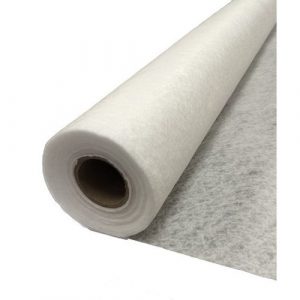How geomembranes can be used for rainwater harvesting?
Harvesting initiatives were first introduced by the Indian government in Tamil Nadu in 2001. Projects were government-funded during this time but quickly became overwhelming by 2011. This is when rainwater harvesting became less government-funded and more farmers supported due to an increase in demand without the proper supply. Fast forward to 2010 and now only 20% of harvesting projects have government aid, usually only for technical compliance reasons. Despite this fact, it is still required by the government in many states for any new developments to have a rainwater harvesting or de-watering system.
The materials used for harvesting over this time frame have varied greatly from lime-cast clay liners and piping to a more environmentally friendly Geomembrane for rainwater harvesting used today that is also more cost-efficient than previous methods and materials used. Rainwater may be collected through two popular methods. Surface runoff harvesting is when rainwater that would otherwise be disposed of as runoff material, is contained and stored for later use to recharge aquifers. Rooftop rainwater harvesting is the act of catching rain where it falls. Rainwater will be collected from the roof of a house or building through catchments.
The resource will typically then be stored through various methods or put to immediate use for gardening, landscaping, raising a crop, cooking or even bathing and drinking once adequately cleaned and filtered. Either harvesting method consists of 4 main subcomponents; catchments, transportation, first flush, and filter. A catchment is a name given to any surface that directly receives rainfall. This may be a courtyard, unpaved or open ground that contributes to the harvesting system.
Once attracted, the rainwater must then be transported through a series of piping into a storage unit. First, flush pertains to the act of flushing away the water received during the first rain, as contaminants from the earth’s atmosphere may affect storable water. This leads us to filtration which of course is the act of purifying the contained water from turbidity and microorganisms.
Geomembranes for rainwater harvesting can assist in each step of the harvesting process without sacrificing the quality or quantity of water contained. When collecting rainwater, geomembrane liners can be placed in man-made ponds to encapsulate the harvest and can be used to help control erosion around the containment site. These ponds may not only be lined but also covered with a geomembrane material to prevent further water pollution during storage.
They aid in the secure separation of rainwater and groundwater also. Geomembrane bags offer safe storage options for rainwater as well. Their impermeable barrier makes for unsurpassed containment and derailment of any potential contaminants.
Geobags may be more cost-effective regarding the price of constructing a reservoir out of pocket and make for more accessible storage. When referring to the filtration process harvested rainwater may endure, geomembrane fabrics may be manufactured with slightly less strict permeability standards to allow the proper percolation of water, while restraining any larger physical contaminants.
Geomembrane filters have been awarded some of the fastest filtration methods currently available by employing the cleaning and filtration properties of sand and polypropylene materials. Geomembrane filtration products can be manufactured to fit the needs of private sectors as well as construction industries. After collection and storage, the use of harvested rainwater can be executed through various products geomembranes provide as well. Nets made of geomembrane material can be incorporated under crop soil to eliminate water waste by recycling excess moisture for future use and to aid in soil stabilization. Geomembrane for Rainwater Harvesting offers the even distribution of harvested rainwater throughout areas of interest as well, while still effectively maintaining their liquid-to-solid separation properties.
FAQs
Can geomembranes be used for rainwater harvesting?
Yes, geomembranes can be used in rainwater harvesting systems to create storage reservoirs or cisterns that retain water for later use.
What are the advantages of factory-fabricated geomembrane panels?
Factory-fabricated geomembrane panels offer advantages such as precise dimensions, quality control, reduced installation time, minimized field seaming, and enhanced reliability.
Can geomembranes be installed on slopes?
Yes, geomembranes can be installed on slopes to prevent erosion, control water migration, or provide additional containment measures.



